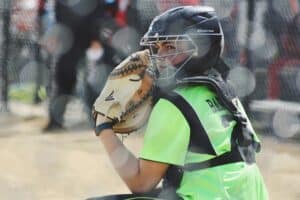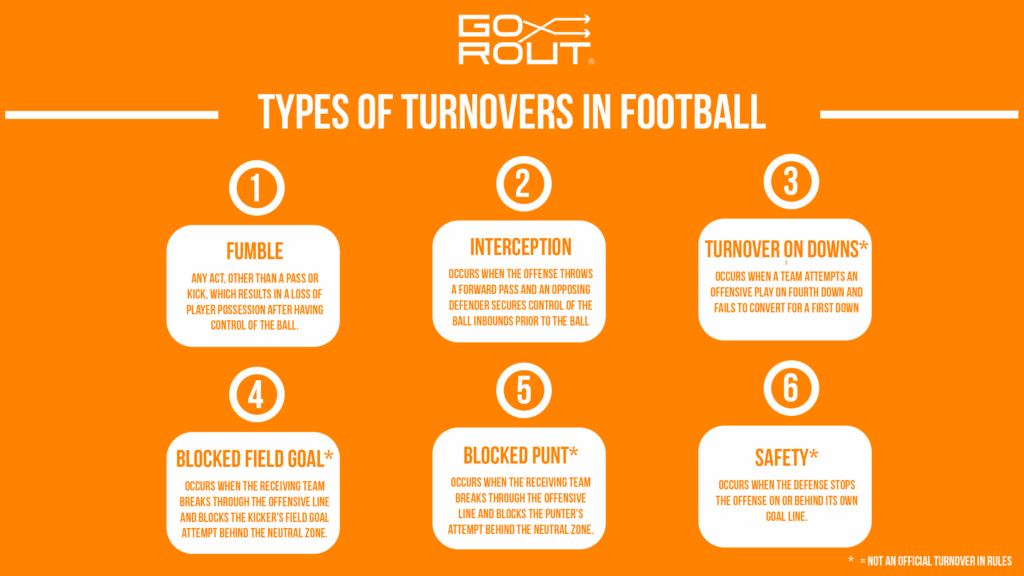Youth Softball Drills & Coaching Strategies: The Ultimate Guide for 2025
Reading Time: 12 minutes
Reading Time: 12 minutes
Youth sports are booming in 2025. About 63% of parents with kids under 18 say their child is playing sports, which means engagement levels are either holding steady or bouncing back.
Youth softball is among the most commonly played sports, so drills and coaching strategies matter more than ever for skill-building and fun.
This guide covers warm-ups, hitting, fielding, and pitching youth softball drills. Whether you’re a new coach or experienced—anyone can follow these step-by-step tips, motivation ideas, and ways to keep practices lively from start to finish.
Summary
Youth softball in 2025 looks a bit different. There are new drills, smarter coaching strategies, and advanced technology.
You can help your team grow by keeping youth softball practice plans organized and focusing on the four main skillsets: hitting, pitching, fielding, and base running.
Key points to keep in mind:
- Youth sports are really getting into technology-based training. Coaches are using apps and AI to break down performance and personalize training to each athlete. Young players improve faster and experience less injuries.
- There’s a movement to make sports more inclusive and accessible to everyone, taking into account different family situations. It means being flexible with schedules, ditching strict attendance rules and adding some unstructured playtime to get more people involved and have fun.
- Mentorship, clinics, and coaching templates create a solid support system for coaches, helping them grow, boost team performance, and create awesome experiences for young athletes in softball.
Electronic pitch-calling technology is gaining traction in youth softball, just like in baseball.
This tech helps coaches and catchers make smarter, data-driven decisions on pitch selection, game strategy and player development.
It integrates real-time analytics and communication tools so teams can adapt quickly during games and practices. This complements the use of apps and AI for training, making coaching more precise and effective.
The right gear makes a difference. In 2025, GoRout Diamond leads the pack in coach-to-player communication systems, helping teams improve their strategies and performance on the field with seamless and efficient real-time communication.
Get a quote or visit the webshop for more information.
The Basics Of Youth Softball Drills
Youth softball drills are the heart of player growth. They teach kids to bat, throw, and field by focusing on basics—nothing fancy, just what works.
It helps them build fundamental skills, improve situational awareness and coordination, learn proper weight transfer and boost their confidence. Here are some examples.
| Drill | Skill Focus | Key Tip |
| Batting Tee | Proper stance and swing mechanics | Knees bent, weight centered |
| Underhand Toss | Throwing hand | Point glove at target and keep weight moving forward |
| Ground Ball
Fielding |
Soft hands | Stay low, use two hands |
| Base Running Sprints | Base paths | Touch every base, quick feet |
Fun and age-appropriate drills keep kids excited, help them work together, and make learning enjoyable. This way, young athletes pick up good techniques and develop a lasting love for the game.
Practice Planning For Youth Softball Coaches

A good youth softball practice gives your team structure and helps players grow. Here’s what you can do:
- At the beginning of each practice, set expectations and review the day’s plan.
- Kick-off with a quick team warm-up or dynamic stretching.
- Move to foundational skill drills—throwing, fielding, hitting.
- Add a fun competition, like a relay or hitting contest.
- End with a team chat or cool-down.
Keep sessions short and lively, ideally 60–90 minutes. Younger kids benefit from routines, so repeating key drills weekly helps them see progress.
Split practice into two halves: focus on defense first and offense second.
Change skills every 10–15 minutes to keep engagement, and toss in games or let players suggest activities to keep things dynamic and fun.
It helps prevent monotony and keeps energy levels high. Here’s a quick planning table to get you started.
| Practice Segment | Time | Activity Type |
| Warm-up | 10min | Stretch/Throw |
| Skills | 30min | Fielding/Hitting |
| Game Play | 20min | Mini-scrimmage |
| Fun Game | 15min | Relay or Challenge |
| Team Chat | 5min | Goals & Support |
Integrating Technology: GoRout Diamond In Action

As advanced youth softball training equipment, GoRout Diamond brings real-time communication to your team. It helps you eliminate sign stealing and reduce confusion on the field, leading to improved player performance.
You’ll get softball coaching apps (web and mobile) and wearable devices for players.
Creating and sending digital pitch calls, defensive shifts, and offensive play signs to your players is fast and simple, whether it’s a game or a practice.
How it works for coaches
- Build and customize plays and strategies in the web app.
- Send position-specific messages to every player’s device with one tap on the mobile app.
- Use 140 characters per message. Other systems limit you to only 10.
- See detailed AI analytics reports and charts—pitch intent, results, and instant game data.
How it works for players
- Pitch-calling devices display the coach’s play calls instantly and clearly, regardless of weather conditions.
- A four-way privacy screen protects each device.
- They are ready to use straight out of the box. No setup headaches.
- All communication is private and encrypted—your team’s strategy stays yours.
Key benefits of GoRout Diamond
- One-tap play calling cuts down on mixed signals or missed signs.
- Weather-resistant tech means you can use it rain or shine.
- No WiFi is needed. It runs on GoRout Air™, so you can take it anywhere.
- Batteries last at least 12 hours on a single charge and can be fully recharged in under one hour.
- Flexible packages can fit any budget or program size.
- It comes with a 100% warranty to cover any damages.
Testimonials and case studies are also available for those interested in learning more about its proven effect.
Ready to level up your youth softball program?
Visit GoRout Diamond to get a quote or shop now!
Top Youth Softball Drills To Include In Your Practices

Great youth softball practices mix in throwing, fielding, catching, hitting, and base running drills. A great drill can make a big difference in helping players develop specific skills, such as glove work or swing mechanics.
Short, focused drills keep players interested and help them get game-ready at every spot on the field.
Throwing fundamentals for youth softball players
Teaching good throwing technique is a must for safe, accurate throws. Always start with basic warm-up tosses at close range to loosen arms and lock in mechanics.
Focus on these basics:
- Grip the ball across the seams with your fingertips.
- Point your glove shoulder toward the target.
- Step and throw, finishing with your weight forward.
- Use a four-seam grip for straighter, longer throws.
Consistent practice helps build arm strength, which is essential for making accurate and powerful throws from any position.
Try “partner relay throws” in lines. Players get to practice quick, game-like throws on a timer. Make sure players focus on proper mechanics each time the ball is thrown to ensure accuracy.
Youth softball fielding drills: Building quick reactions
Players need quick feet and soft hands for both grounders and fly balls.
Try a “rolling ground ball” drill—coaches or teammates hit or roll balls in all directions to boost reaction time and form. Tracking a ball hit to different positions helps players improve their defensive reactions and reflexes.
Some solid drills include:
- Rapid infield grounders
- Short hop pick-ups with partners
- Fly ball communication drills (yell “mine” or “yours”!)
- Fielding pop-ups to practice catching high balls
Wrap up with a hitting game—players field balls hit at different speeds. Set a target, like eight cleanly fielded plays out of 10 in a row, to keep things competitive.
These drills are effective for teaching players proper glove work and defensive positioning.
Youth softball catching drills to boost confidence behind the plate
Catching drills build skill and trust for players behind the plate. Start with barehand blocking—players drop to their knees and keep the ball in front of them.
Players should practice both kneeling and standing positions to build confidence and versatility behind the plate.
Some great ideas include:
- Tennis ball reaction tosses for quick hands
- Pop-up catches to work on tracking
- Rapid-fire squat-to-throw home drills for fast transitions
Split time between blocking, framing, and quick throws to second.
Hitting drills for every youth softball player

Batting practice should include structured hitting repetitions such as tee work, soft toss, and live pitching to build timing and control.
Start at the tee, making sure each hitter focuses on proper swing mechanics and situational hitting.
Let players line up with home plate, making sure their front foot is planted well and pointed at the pitcher.
Try these drills:
- Three-pitch challenge—players get three swings to react to different pitches and aim for quality hits each round.
- Opposite field grounders for control, awareness, and ability to drive the ball the other way.
- Hitting game with points for line drives and solid contact.
Quality reps and swing movements are more important than many swings during batting practice, so focus on precision and technique over sheer volume.
Rotate players so everyone gets to hit and field each round, starting on the left side of the line to ensure equal turns.
Youth softball base running drills to build speed and smart play
Base running drills should mix speed with smart choices. The “home-to-second relay” drill gets players running at full speed while a live ball is in play.
Players should focus on making quick, accurate turns at second base to improve their base running efficiency.
Try these too:
- First-to-third sprint
- Time limit challenge around every base
- Reaction runs—on the coach’s signal, players sprint or dive back
Keep each drill under 90 seconds. Add a scoring system to reward fast runners and smart decisions.
Competition rounds during practice also increase intensity and engagement, pushing players to perform at their best.
Station-based youth softball training for maximum engagement
Stations keep players moving and cut down on those endless lines.
Split your team into groups, each one working on a different skill—ground balls, fly balls, throwing, catching, or hitting.
At each station, you can set up drills so that one player at a time receives focused attention on a specific skill.
Adjust stations for your team’s age and skill level. Stations also get teams ready for tournament play, where staying focused and efficient really matters.
Youth softball advanced drills for skill progression
Advanced drills push players to grow faster. They’re best for older kids or those who’ve played before and want to level up.
Older players have different cognitive developments and physical capabilities than younger players in softball, so tailoring drills to their level ensures they are both challenged and supported.
Drills to try:
- 21 outs: The team records 21 outs in the field with no errors, just like a full game.
- Live game simulation: Pitchers face hitters, infielders turn double plays, and outfielders chase live fly balls and make deep throws.
- Timed relay races: Players throw the ball across every base, racing for both speed and accuracy.
Add these drills as the season goes on or when skills improve.
Game Situations: Applying Youth Softball Drills To Real Play

Game situation drills help teams react faster and make smarter choices. They make practice feel more like the real thing, so players get better at teamwork and playing both offense and defense.
Simulated game scenarios
- Set up two teams to play practice innings. The other team competes to score the most runs during each round. After three outs, teams switch sides so everyone gets a chance to play offense and defense and compete for runs in two halves.
- Start with runners on base and one out. Call out defensive plays and let the offense try different strategies.
Defensive shifts and strategy
- Move fielders depending on whether the batter’s left- or right-handed.
- Run double-play drills with runners on first and second. Focus on fast throws and clear team talk. Players should practice making quick decisions about where to throw when someone else throws it during a play.
- Switch up defensive lines based on the score or inning. It teaches players to adjust under pressure.
Offensive plays and baserunning decisions
- Use a three-pitch rule to speed up at-bats and encourage smarter pitch selection.
- Try baserunning relays. Players must decide to stay or go, practicing quick choices under pressure.
Mental Preparation And Focus
Help your players stay focused. Encourage them to use visualization techniques by imagining successful plays before practice.
Remind them that mistakes happen and teach them how to reset. They should take a deep breath, use positive self-talk, such as “I’ll get the next one,” and focus on the present.
Have each player create a pre-game mental routine, including listening to music, setting personal goals, and practicing breathing techniques. Suggest they write down this routine and keep it accessible.
Explain that a strong routine can help them make faster decisions and handle stress better.
Nutrition And Fitness For Young Softball Players

Good nutrition and fitness fuel great performance. Teach players to stay hydrated by aiming for 8–10 cups of water daily and drinking water before, during, and after games.
Strengthen players’ arms with age-appropriate drills like push-ups, medicine ball throws, or light dumbbell work.
Make them snack smart: bananas, yogurt, trail mix, or crackers with peanut butter keep energy high and aid recovery.
Small habits like these help players perform better and stay healthy all season.
Safety Precautions And Injury Prevention
Begin each practice with a warm-up—light jogging, arm swings, and stretches activate muscles and joints. Always cool down with light stretching to prevent tightness.
Ensure all players wear proper safety gear, especially catchers (helmet, chest guard, shin guards).
Conduct safety checks before each session: inspect gear, check cleats for grip, scan the field, and remind players to slide feet-first. Common injuries include sprains and overuse.
Encourage players to report pain early. If injured, stop playing, apply ice, and seek medical advice.
Coaching Tips For Motivating Young Softball Athletes
Motivation starts with positive reinforcement—praise effort to help kids feel seen. Set clear, small goals, so progress feels achievable.
Celebrate new skills. Rotate roles and drills to keep things fresh and engaging. Pair newer players with experienced ones so that everyone can grow.
Model a positive attitude—it sets the tone for the team.
Fun matters: when players feel supported and included, they build confidence and are more likely to stick with the game long-term.
Youth Softball Player Development: Tracking Progress Over Time

Tracking progress keeps players motivated. Use simple sheets to assess throwing, hitting, and running. Give quick feedback and show short videos so players can see their improvement.
Set monthly goals like better accuracy or bat speed. Use charts to track wins and adjust age group drills as needed. Review goals together to boost commitment.
Celebrate milestones with shoutouts, stickers, or Milkshake Fridays.
Posting stats and highlights builds confidence. Progress tracking—especially in girl-focused drills—makes learning fun and helps every player stay focused and excited.
Season Planning For Youth Softball Coaches
In 2025, youth softball coaches are getting into organized season planning. Start off with clear goals, a practice and game schedule, player forms, and checking that all the equipment is good to go.
Make sure to have tryouts set up before your first practice—it’ll save you a ton of headaches. As the season goes on, mix up the drills each week depending on how everyone’s feeling and their energy.
Switch up the positions, focus on areas that need work, and keep an eye out for burnout. Remember to keep the lines of communication open with the players and get their feedback.
Post-Season Review And Off-Season Training
Start your post-season with a team evaluation. Review game and practice performance, and ask players what worked. Help each player reflect on strengths and growth areas with quick notes or one-on-one chats.
Off-season drills, such as speed ladders, resistance bands, core workouts, and tee work, keep skills sharp.
Staying active matters. Set easy-to-track goals, such as boosting batting average, cutting sprint time, or attending all practices. It keeps your team focused, confident, and ready to grow in the next season.
Youth Softball Team Building Activities And Communication
Teamwork and communication make practice better. Start with trust-building games like partner toss or the “human knot.”
Use the buddy system to build camaraderie. On the field, try call-and-response drills and “shout your play” exercises.
End with a “highlight reel” where players share teammate wins to build team spirit.
Parental Involvement And Support
Parental support boosts confidence and motivation. Cheer for effort and teamwork, not just wins. Avoid shouting instructions during games, and offer kind words after tough plays.
Help at practice by setting up gear or organizing water breaks—this frees coaches to focus on teaching. Get involved with team fundraisers to support gear and travel needs.
Try encouragement bags with notes or small items from parents and players. These efforts build team spirit and help young athletes feel supported all season long.
Conclusion About Youth Softball Drills
Youth softball drills build strong fundamentals and help your team play more confidently. The right mix of throwing, fielding, catching, and batting drills can improve game skills for every position.
Here’s what matters most for your coaching:
- Consistency: Practice key drills each week.
- Focus: Target specific skills for each player’s position.
- Teamwork: Encourage good communication in every drill.
Players enjoy practice more when they see progress. Try to keep drills short, interactive, and fun. It helps boost motivation and keeps everyone involved.
Want to see your team improve faster? Implement GoRout Diamond into your practices and games and boost team communication and performance on the field.
Get a quote or visit the shop now.
FAQs About Youth Softball Drills
How do I teach my 7-year-old to catch a softball?
Start with a soft ball and use gentle underhand tosses. Remind your kid to keep their glove open and eyes locked on the ball. Give plenty of praise for every catch, even the wobbly ones. Try to practice about 10 minutes each day.
What is the 21-outs drill in softball?
This one’s all about teamwork. The goal is to record 21 outs in a row without any mistakes. If someone slips up, you start over at zero. It’s a tough challenge and really dials up the focus.
How can I improve my youth softball hitting?
Try simple drills like batting tee work, soft toss, and front toss. Encourage players to focus on their stance and watch the ball make contact with the bat.







